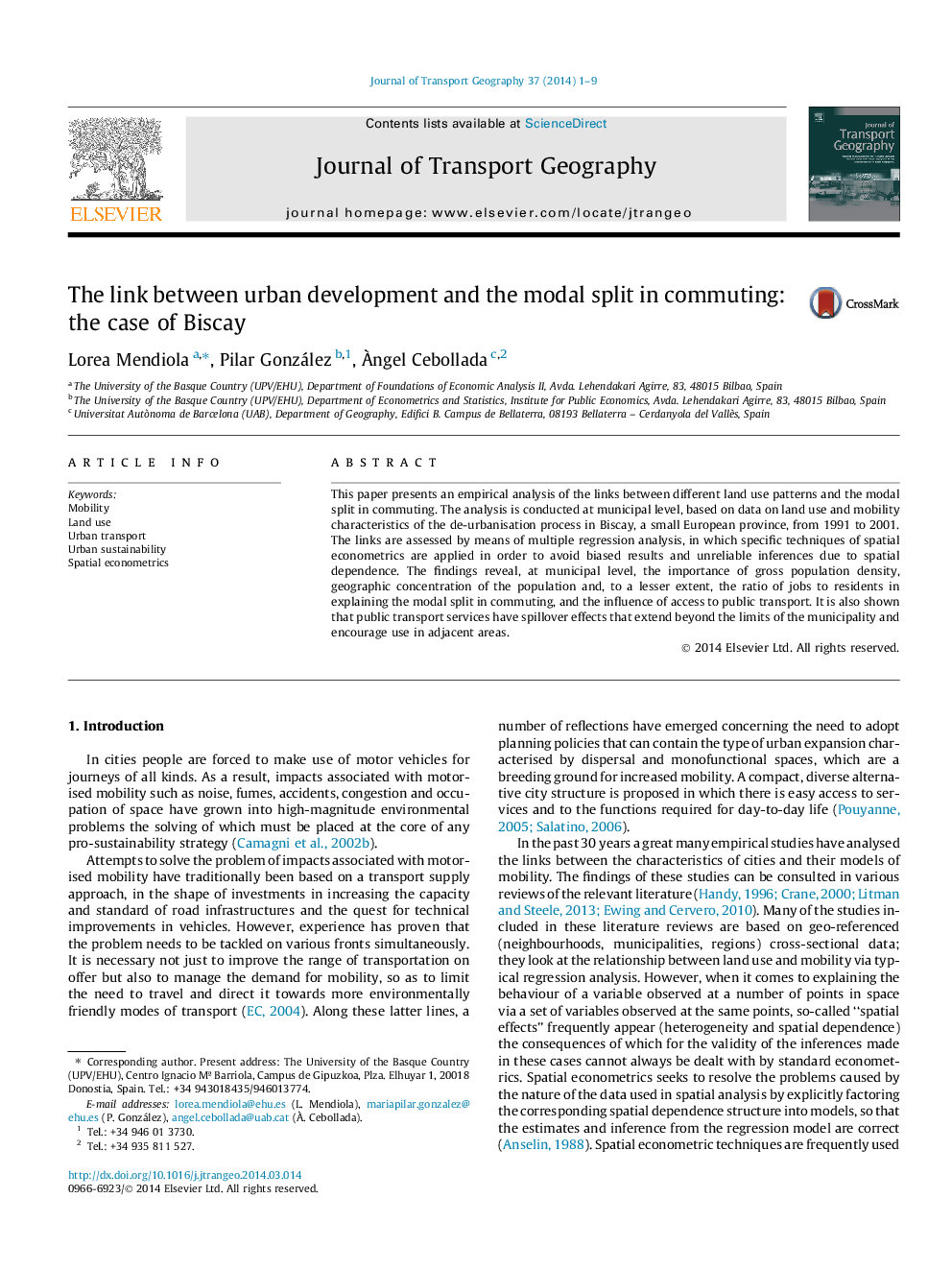| Article ID | Journal | Published Year | Pages | File Type |
|---|---|---|---|---|
| 1059240 | Journal of Transport Geography | 2014 | 9 Pages |
•The links between land use and modal split in commuting are analysed.•Spatial econometrics is applied to avoid biased results and unreliable inference.•Population density and concentration are the most important factors in modal split.•Other factor such as functional mix and access to public transport also influence.•Public transport services have spillover effects beyond municipal boundaries.
This paper presents an empirical analysis of the links between different land use patterns and the modal split in commuting. The analysis is conducted at municipal level, based on data on land use and mobility characteristics of the de-urbanisation process in Biscay, a small European province, from 1991 to 2001. The links are assessed by means of multiple regression analysis, in which specific techniques of spatial econometrics are applied in order to avoid biased results and unreliable inferences due to spatial dependence. The findings reveal, at municipal level, the importance of gross population density, geographic concentration of the population and, to a lesser extent, the ratio of jobs to residents in explaining the modal split in commuting, and the influence of access to public transport. It is also shown that public transport services have spillover effects that extend beyond the limits of the municipality and encourage use in adjacent areas.
